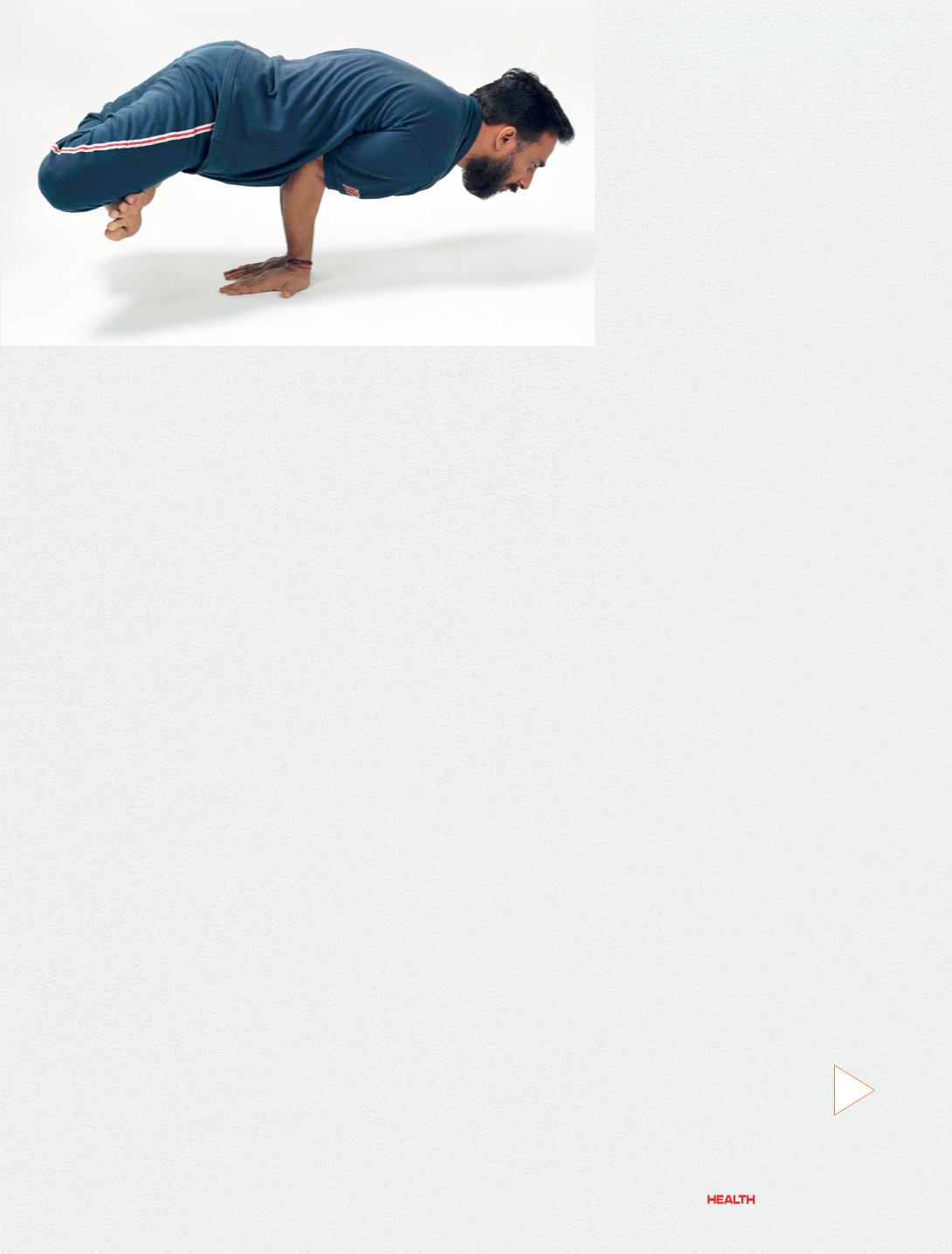

A well-rounded program
of yogic therapy includes
the following elements:
1. Asana
The major series of asana for
prevention and management
of arthritic conditions is
the anti-rheumatic group of
pawanmuktasana, which puts
the body through its full range of
movements and fully relaxes and
massages all the joints. Before
commencing pawanmuktasana,
the patient should soak the limbs
in cold and/or warm salty water
to encourage blood circulation.
As the flexibility of the joints
increases, other asana can be
added; however, never strain or
inflict pain. Major asana include
Shashankasana, marjari-asana,
shashank bhujangasana, and
akarna dhanurasana. Vajrasana
should be practiced after meals
if possible. Ultimately, surya
namaskara should be adopted to
capacity. Six to twelve rounds each
morning should prove sufficient
to prevent further arthritic
degeneration throughout life.
2. Shatkarma
(The process of cleansing the system)
Body purification, similar to an
intestinal wash, stomach cleansing,
sinus area cleansing, and so on,
are very important in alleviating
constipation and eliminating any
metabolic acids and other wastes
which accumulate in the joints,
bloodstream and tissues. Arthritis
will never be fully cured while
constipation remains.
3. Pranayama
(the techniques to right breathing)
Including abdominal breath, nadi
shodhana and bhastrika bolster
the digestive and eliminative
capacities.
4. Meditation
Releases pent-up mental and
emotional tensions. Antar
mouna stage 2, where thoughts
are observed, is especially useful
in recognition of self-limiting
and fixed attitudes and behavior
patterns. Then in stage 3 the
sufferer should be encouraged
to create mental scenes in which
he is expressing deep-felt anger
and aggression, thus releasing
suppressed emotional conflicts,
which contribute to arthritic
rigidity, while at the same time
remaining a detached witness.
Deep relaxation and meditation
will develop a positive state of
mind in the sufferer.
5. Diet
The following simple diet will
reduce pain and allow the
eliminative and regenerative
processes to work at optimum
efficiency. A strong, clean
digestive system readily absorbs
all necessary nutrients from the
following diet:
• Cooked light grains and cereals
in the form of whole meal bread,
chapattis, rice, millet, and barley.
• Boiled pulses (dal) especially the
lighter types such as moong are
a sufficient source of protein.
• Boiled or baked vegetables,
especially greens but not onions.
• Salads using green leafy
vegetables, celery, tomato,
beetroot, carrots, cucumber,
sprouted pulses, seeds and so on.
• Fruits (except bananas), both
fresh and dried, and nuts in
small quantities. Instead of
sugar, a little honey can be taken.
• Reduce intake of milk and
dairy products such as cheese
and ghee; avoid highly refined,
processed and synthetic foods,
including white flour (maida).
• As a rule, only fruit and
vegetables that are in season
and grown locally should be
selected. If absolutely necessary,
small quantities of white meats,
chicken and fish can be taken
occasionally.
• Meals should be eaten between
10am to 12noon and 5pm to
7pm. The evening meal should
be lighter. This ensures that food
is in the stomach when digestive
energies are high and digestion
is well underway at sleeping
time.
• Missing a meal or fasting one
day per week will ease pain,
especially during acute phases,
and accelerates relief and
recovery of health. Do not take
snacks or eat between meals.
6. Rest
During the acute, inflammatory
stage, rest is essential, and
subsequently periods of activity
must be alternated with periods of
rest.
59
May/June 2015















